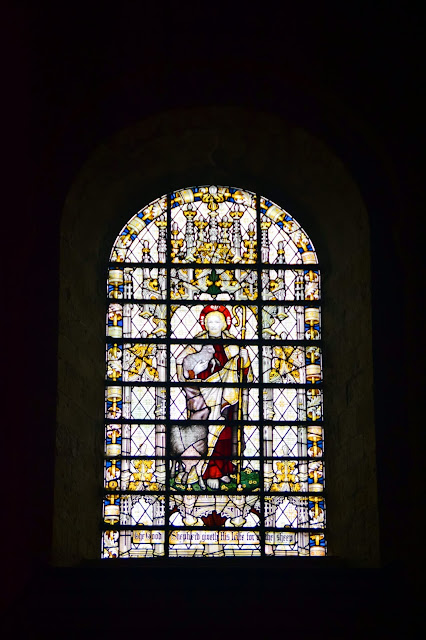This
church is of great simplicity and beauty, built in the 1120s of Isle of
Wight stone by Normans. It was given by Henry 1 to a small community of
Augustinian or Austin canons (monks.) Their seats in the chancel with
arched recesses may still be seen. Their priory buildings that once
stretched south to the Roman wall have completely disappeared. The
canons moved some four miles away to Southwick for a more quiet life
after some 20 years but sent a canon till the Reformation in the 1530s
to serve this parish.
The
oldest ceiling in the church is Elizabethan in the North Transept and
gives access to the three bells. It was Sir Thomas Cornwallis, in charge
of gambling at the courts of Elizabeth and James 1, who persuaded the
queen to fund a wall, blanking off the ruined South Transept and
rebuilding the east wall; into this the Perpendicular style East window
was inserted. The memorial glass is modern. Cornwallis was the last
royal constable of the Castle and his effigy is to the right of the East
window. On the South wall is an Elizabethan plaque, dated 1577, the
oldest of this type in the county and a note of the royal grant.
Built
of Isle of Wight stone by Norman masons in the 1120s it was given by
Henry 1 to Augustinian or Austin canons in 1133, Their head was a prior,
their dress black, their vows traditional – of poverty, chastity and
obedience – and their monastic buildings stretched from the south side
of the church. No trace of these remain except the nine exits from
their toilet facilities in the Roman wall; the small company moved to
Southwick, a quieter location, within a few years. Austin canons left
their monastic buildings to work as local parish priests, unlike monks.
There were seven Austin houses in England




































No comments:
Post a Comment